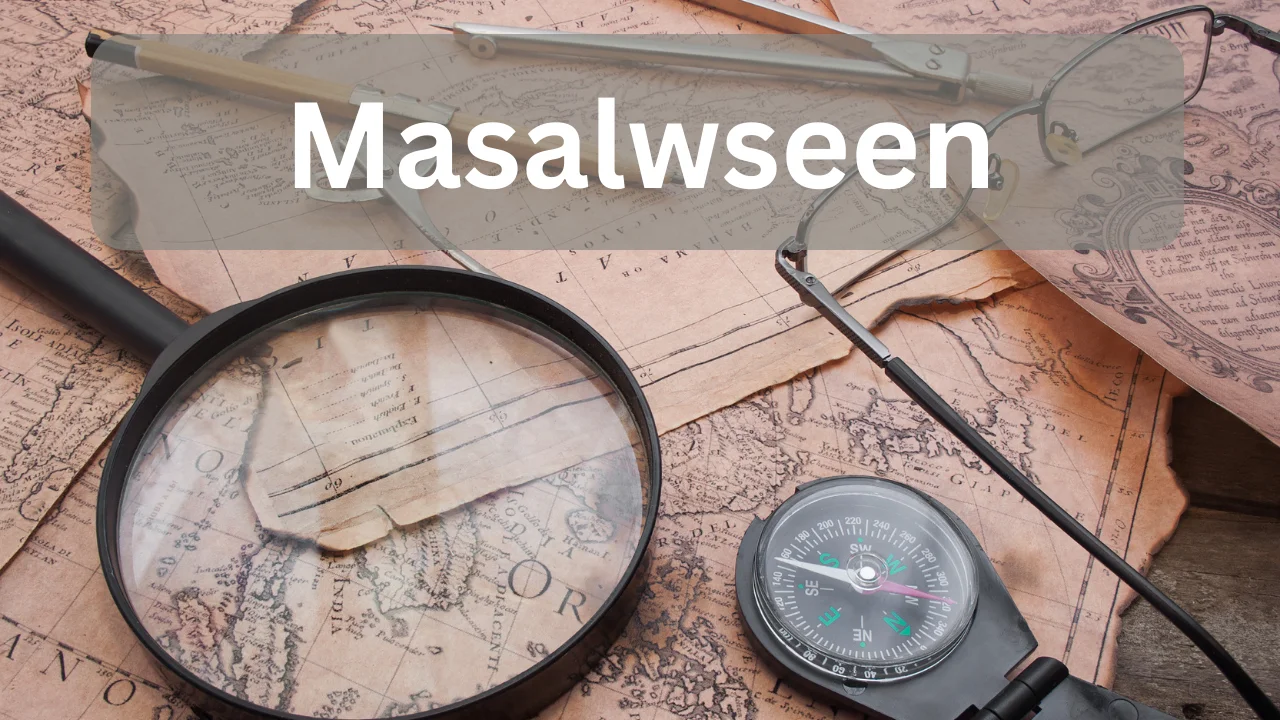Introduction
Masalwseen is a fascinating concept that weaves together a rich tapestry of history, culture, and modern applications. From its origins to its current uses, Masalwseen offers a unique lens through which to understand various cultural and historical contexts. This comprehensive guide delves into what Masalwseen is, its historical significance, traditional applications, and contemporary relevance.
What is Masalwseen?
Masalwseen refers to a multifaceted concept or artifact that holds significant cultural, historical, and practical importance. Although the exact nature of Masalwseen may vary across different cultures and contexts, it generally embodies a specific practice, object, or idea that has been passed down through generations. Often, Masalwseen includes elements of folklore, traditional knowledge, and historical events that shape its meaning and usage.
In its essence, Masalwseen serves as a symbol of continuity and identity, linking the past with the present and future. It may take the form of a physical object, such as a traditional tool or artifact, or a practice, such as a ritual or custom. Understanding Masalwseen involves exploring these various dimensions and appreciating its role in cultural heritage.
Historical Significance of Masalwseen
The historical significance of Masalwseen is deeply rooted in its origins and evolution over time. Masalwseen has often been integral to the cultural and social fabric of the communities that cherish it. Historically, it has played crucial roles in rituals, ceremonies, and daily life, reflecting the values and beliefs of the people.
For instance, in many cultures, Masalwseen might be linked to agricultural practices, where it symbolizes fertility and prosperity. In other contexts, it might be associated with spiritual or religious practices, serving as a medium through which individuals connect with the divine or the ancestral spirits. The historical timeline of Masalwseen can be traced back to ancient civilizations, where it was revered and meticulously preserved.
The evolution of Masalwseen over centuries highlights its adaptability and enduring relevance. As societies transformed and new influences emerged, Masalwseen too underwent changes, integrating new elements while retaining its core essence. This dynamic nature of Masalwseen underscores its resilience and the continuous thread it provides through different epochs of history.
Traditional Uses of Masalwseen
Traditionally, Masalwseen has been utilized in various ways, each reflecting the unique context of its use. In many communities, Masalwseen was central to daily life and was often imbued with symbolic meanings. Here are some traditional uses of Masalwseen:
- Rituals and Ceremonies: Masalwseen played a pivotal role in religious and spiritual ceremonies. It was often used in rituals to invoke blessings, ensure protection, or celebrate significant events. For example, a traditional object or practice might be used during harvest festivals to thank the deities for a bountiful crop.
- Cultural Practices: In many cultures, Masalwseen was integrated into cultural practices and social customs. It could be part of initiation rites, marriage ceremonies, or community gatherings. These practices often served to reinforce social bonds and transmit cultural knowledge to younger generations.
- Daily Utilities: Beyond its symbolic and ritualistic uses, Masalwseen often had practical applications. Traditional tools or techniques that form part of Masalwseen were used in agriculture, medicine, and craft-making. These practical uses highlight the ingenuity and resourcefulness of the communities that developed and refined them over generations.
- Storytelling and Folklore: Masalwseen was also a key element in storytelling and the preservation of folklore. Through stories, songs, and oral traditions, the knowledge and significance of Masalwseen were passed down, ensuring its perpetuation.
Modern Uses of Masalwseen
In contemporary times, Masalwseen has found new applications and continues to be relevant in various ways. The modern uses of Masalwseen reflect both a continuation of traditional practices and an adaptation to current contexts. Here are some of the ways Masalwseen is used today:
- Cultural Preservation: As societies modernize, there is a growing interest in preserving cultural heritage. Masalwseen plays a crucial role in this effort, serving as a link to the past and a means of maintaining cultural identity. Museums, cultural centers, and educational programs often feature Masalwseen as part of their exhibits and activities.
- Tourism and Cultural Exchange: Masalwseen has become a focal point in cultural tourism and exchanges. Visitors from around the world are drawn to the unique aspects of Masalwseen, seeking to learn and experience the traditions associated with it. This has also led to a renewed interest and pride among local communities in their cultural heritage.
- Contemporary Art and Design: Artists and designers are increasingly drawing inspiration from Masalwseen. By incorporating traditional motifs, techniques, and symbols into contemporary art and design, they create works that bridge the past and present. This fusion often results in innovative and meaningful expressions that resonate with a wide audience.
- Educational and Research Initiatives: Modern educational and research initiatives are exploring the depths of Masalwseen to uncover its historical, cultural, and scientific significance. Universities and research institutions are studying Masalwseen to better understand its origins, evolution, and impact on various aspects of life.
- Sustainable Practices: In a world increasingly focused on sustainability, traditional practices encapsulated in Masalwseen are gaining recognition for their eco-friendly approaches. Many aspects of Masalwseen, such as traditional agricultural techniques or natural medicine, offer sustainable alternatives that are being revisited and adapted for modern use.
FAQs
1. What is Masalwseen?
Masalwseen refers to a cultural artifact or practice that holds significant historical, cultural, and practical importance, often passed down through generations.
2. Why is Masalwseen historically significant?
Masalwseen is historically significant because it represents the values, beliefs, and traditions of the communities that developed and preserved it over centuries.
3. How is Masalwseen used in modern times?
In modern times, Masalwseen is used for cultural preservation, tourism, contemporary art, education, and promoting sustainable practices.
4. Can Masalwseen be found in museums?
Yes, many museums and cultural centers feature Masalwseen as part of their exhibits to educate the public about its historical and cultural significance.
5. What are some traditional uses of Masalwseen?
Traditionally, Masalwseen was used in rituals, ceremonies, daily utilities, and storytelling to reinforce cultural practices and social bonds.
Conclusion
Understanding Masalwseen provides valuable insights into a rich tapestry of history, culture, and practical knowledge. Its historical significance, traditional uses, and modern applications highlight the dynamic nature of cultural heritage and its enduring relevance. As we continue to explore and appreciate Masalwseen, we not only preserve an important part of our past but also enrich our present and future.
The journey through Masalwseen is one of discovery and connection, offering a deeper appreciation of the diverse ways in which human ingenuity and cultural practices have shaped our world. Whether you are a historian, a cultural enthusiast, or simply curious, Masalwseen invites you to explore its many facets and uncover the stories it holds.
In conclusion, Masalwseen stands as a testament to the resilience and creativity of human societies. Its ability to adapt and remain relevant across different times and contexts underscores its significance as more than just a relic of the past. By engaging with Masalwseen, we honor our heritage and pave the way for future generations to do the same.

Stephen Norman is a skilled and accomplished writer known for his versatility across numerous niches. He consistently delivers insightful and engaging content in various fields. Stephen’s extensive experience and profound expertise make him a highly sought-after author in the digital writing sphere.











